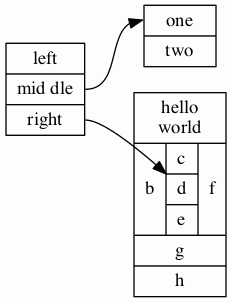algorithmic modeling for Rhino
Hi, I often make things that work, and then gradually morph them into things that don't work. When I'm coding I can use git or some other version control tool to track my changes, but GH files are binary, and GHX files seem to change so dramatically when I make changes that they don't seem to be worth tracking.
Has anyone had any luck using any sort of version control with grasshopper?
As a side thought, if it turns out that version control is silly, is there a good workflow to capture what you've done at each save?
Views: 4439
Replies to This Discussion
-
So, in the spirit of showing what I mean, I've made a start on this python script: https://gist.github.com/notionparallax/8824b58799bd066eee79d909a978...
It takes a model, like this one:
and produces dot notation that renders like this:
This has a number of problems, but I thought I'd share the early progress instead of sitting on it.
Problems:
- inputs don't parse yet
- output parsing is inconsistent (the sphere produced an output at one point, but not anymore)
- There isn't yet a way of showing how things are connected, just that they are
Dot has a load of features that would support this sort of thing if you were so inclined, e.g:

This file, if it was stable enough, could be committed along with the binary file.
It would probably be a similar process to make a cosmetics file that described node locations and that kind of thing.
-
-
That's pretty neat as a quick visualization of changes!
-
-
Yeah, definitely take a look!
-
- ‹ Previous
- 1
- 2
- Next ›
© 2026 Created by Scott Davidson.
Powered by
![]()